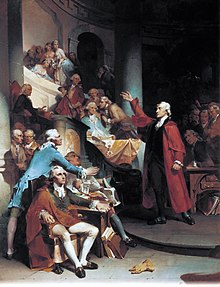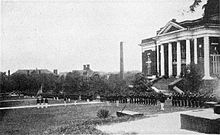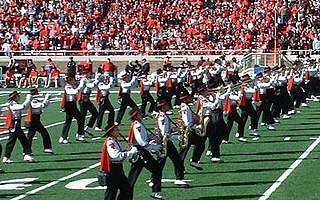
A marching band is a group of instrumental musicians who perform while marching, often for entertainment or competition. They are most popular in the United States, though not uncommon in other parts of the world. Instrumentation typically includes brass, woodwind, and percussion instruments. Most marching bands wear a uniform, often of a military style, that includes an associated organization's colors, name or symbol. Most high school marching bands, and some college marching bands, are accompanied by a color guard, a group of performers who add a visual interpretation to the music through the use of props, most often flags, rifles, and sabers.

The Southwestern Athletic Conference (SWAC) is a collegiate athletic conference headquartered in Birmingham, Alabama, which is made up of historically black colleges and universities (HBCUs) in the Southern United States. It participates in the NCAA's Division I for most sports; in football, it participates in the Football Championship Subdivision (FCS), formerly referred to as Division I-AA.
Historically black colleges and universities (HBCUs) are institutions of higher education in the United States that were established before the Civil Rights Act of 1964 with the intention of primarily serving African Americans. Most of these institutions were founded during the Reconstruction era after the Civil War and are concentrated in the Southern United States. During the period of racial segregation in the United States, the majority of American institutions of higher education served predominantly white students, and disqualified or limited black American enrollment. Later on some universities, either after expanding their inclusion of black people and African Americans into their institutions or gaining the status of minority-serving institution, became Predominantly Black Institutions (PBIs).

Florida Agricultural and Mechanical University (FAMU), commonly known as Florida A&M, is a public historically black land-grant university in Tallahassee, Florida. Founded in 1887, It is the third largest historically black university in the United States by enrollment and the only public historically black university in Florida. It is a member institution of the State University System of Florida, as well as one of the state's land grant universities, and is accredited to award baccalaureate, master's and doctoral degrees by the Commission on Colleges of the Southern Association of Colleges and Schools.

Pi Kappa Phi (ΠΚΦ), commonly known as Pi Kapp(s), is an American Greek Letter secret and social fraternity. It was founded by Andrew Alexander Kroeg Jr., Lawrence Harry Mixson, and Simon Fogarty Jr. on December 10, 1904 at the College of Charleston in Charleston, South Carolina. The fraternity has 187 active chapters (168 chartered chapters and 19 associate chapters), and more than 113,000 initiated members.

Alabama State University is a public historically black university in Montgomery, Alabama. Founded in 1867, ASU is a member-school of the Thurgood Marshall College Fund.

Grambling State University is a public historically black university in Grambling, Louisiana. Grambling State is home of the Eddie G. Robinson Museum and is listed on the Louisiana African American Heritage Trail. Grambling State is a member-school of the University of Louisiana System and Thurgood Marshall College Fund.

Southern University and A&M College is a public historically black land-grant university in Baton Rouge, Louisiana. It is the largest historically black college or university (HBCU) in Louisiana, a member-school of the Thurgood Marshall College Fund, and the flagship institution of the Southern University System. Its campus encompasses 512 acres, with an agricultural experimental station on an additional 372-acre site, five miles north of the main campus on Scott's Bluff overlooking the Mississippi River in the northern section of Baton Rouge.

The Bayou Classic is an annual college football classic rivalry game between the Grambling State University Tigers and the Southern University Jaguars, first held under that name in 1974 at Tulane Stadium in New Orleans, although the series itself actually began in 1932. A trophy is awarded to the winning school.

The Florida State University Marching Chiefs is the official marching band of Florida State University. The band has served in this capacity since the 1940s and continues to perform at all home football games as well as several away games each year. There are 420+ members, or Chiefs, as members are sometimes known, in the band who hail from almost every academic department within the university.

Prairie View A&M University is a public historically black land-grant university in Prairie View, Texas. Founded in 1876, it is one of Texas's two land-grant universities and the second oldest public institution of higher learning in the state. It offers baccalaureate degrees in 50 academic majors, 37 master's degrees and four doctoral degree programs through eight colleges and the School of Architecture. PVAMU is the largest HBCU in the state of Texas and the third largest HBCU in the United States. PVAMU is a member of the Texas A&M University System and Thurgood Marshall College Fund.

Talladega College is a private historically black college in Talladega, Alabama. It is Alabama's oldest private historically black college and offers 17 degree programs. It is accredited by the Southern Association of Colleges and Schools.

The Hawkeye Marching Band is the marching band for the University of Iowa. The band performs at all home Hawkeye football games at Kinnick Stadium in addition to other events. It is the largest and most visible musical ensemble at the university. The band was founded in 1881 as a military band, giving membership to both music students and members of the military. In 1990, the band was awarded the Louis Sudler Intercollegiate Marching Band Trophy, generally considered to be the most prestigious honor a collegiate marching band can receive.
The Honda Battle of the Bands is an annual marching band exhibition in the United States which features performances by bands from historically black colleges and universities (HBCUs). Sponsored by the American Honda Motor Company, the Invitational Showcase took place in the Mercedes-Benz Stadium in Atlanta, Georgia in late January from 2003 to 2020. In 2022, it was announced HBOB selected Alabama State University in Montgomery, Alabama to be the first ever HBCU campus to host the in-person event in February 2023. In November 2023, HBOB announced they will be on haitius in 2024 and return in 2025.
The black college football national championship is a national championship honor that, since 1920, has been regularly bestowed upon the best football teams among historically black colleges and universities (HBCUs) within the United States.

The Florida Classic is the annual college football rivalry game between Bethune–Cookman University and Florida A&M University. The game has been televised nationally by ESPN Classic as a part of a multi-year contract with the Mid-Eastern Athletic Conference (MEAC), which had been both schools' home conference until their July 2021 departure for the Southwestern Athletic Conference (SWAC). The game is operated by Florida Citrus Sports, a non-profit group that also organizes the Pop-Tarts Bowl and Citrus Bowl. The Classic has approximately a $31 million impact on Orlando's economy; it was the largest MEAC conference football game before the schools left for the SWAC, and remains the largest Division I FCS football game in Florida.
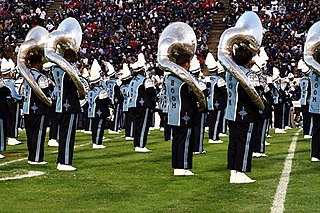
The Sonic Boom of the South is the marching band of Jackson State University (JSU) located in Jackson, Mississippi, US.
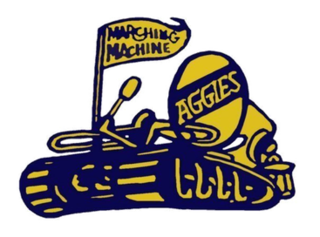
The Blue and Gold Marching Machine is the official marching band of North Carolina A&T State University. The Blue and Gold Marching Machine performs pre-game and halftime shows at all North Carolina A&T Aggies football home games and travels to most away games.

GSU Tiger Marching Band, also known as the Tiger Marching Band is Grambling State University's marching band. It is often billed as the "World Famed Tiger Marching Band". The band was formed by Ralph Waldo Emerson Jones in 1926.
